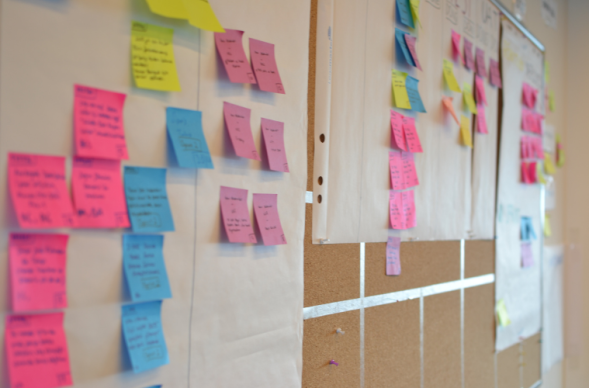Blog / BIM & Construction Management
Overcoming barriers to Lean and BIM in architecture offices
Categories

Studies highlighting how lean and BIM techniques could be applied to architectural and engineering design offices, and how it could generate quality improvement and reduction of deadlines and costs are easily found (Manzione, 2006; Leusin, 2011; Sacks, Korb, Barak, 2018). However, studies that specifically approach the implementation process of lean design in architecture offices, discussing and promoting their cost reductions procedures, deadlines, and product improvements are still scarce.
This may be one of the main reasons that justifies the levels use of lean design in these offices. Besides, of course, slowing down the implementation of BIM, as both are work processes that require integrated implementation (SACKS, KORB, BARAK, 2018). It is under this context that this article is set. To take a look at the reasons that are hindering a full use of Lean and BIM in organizations.
What the literature tell us about the problems of using Lean and BIM
As Lean and BIM act directly on processes, these will suffer modifications (LIKER, 2005). But, when understanding that the implementation of Lean and BIM generate deep organizational changes, it makes this task much more complex, because it involves the rupture of paradigms, mainly functional and cultural (FREITAS, 2015). Baldam, Valle and Rozenfeld (2014) highlight this complexity, especially when understanding that the implementation of Lean and also BIM crosses departments and boundaries of organizations, and may reach the communication or way of working with customers, suppliers and the entire production chain.
Problems for the implementation of process adjustments have become frequent and a study based on Brazilian companies showed that few have formalized and developed an innovation process and project management model (RABECHINI, 2002). Other factors that are related to the failure of organizations, when they seek to redesign their processes, according to Macieira (2015), are: "communication failures; lack of senior management sponsorship; failure to manage the performance of processes; lack of vision of end-to-end process; low engagement of the involved ones; lack of financial measurements".
In the database research, papers related to the practical use of Lean techniques, whether works execution as well as design phase were (and are) easily found, but none of them details the procedures for implementing these techniques in architecture design offices. Does this gap in the literature not reflect the insignificant, if not non-existent, state of Lean adoption in architectural firms, for example, and their difficulty in implementing BIM? Even acknowledging all the benefits that these work methodologies could bring.
A practice adopted, and yet has not proven effective, is that the simple copy of procedures implemented by an organization that was previously successful in the implementation of Lean and BIM, could generate failures and unsatisfactory results. This means that the adoption of Lean and also of BIM cannot be understood as the simple introduction of techniques, in isolation (LIKER, CONVIS, 2013).
BEP & BIP
Nowadays, there is a lot of materials addressing the BEP (BIM Execution Plan), a document that accompanies BIM projects and should be prepared in the early stages of project's design. The objective of this document is to organize the project's processes, defining goals, stages, and responsibilities for those involved in the project's life cycle, as well as having information about resources and software to be used.
It is assumed that with the creation of the BEP, the workflow becomes more dynamic and communication among participants becomes more fluid. Then, the BEP specifies how companies should work with BIM, but does not specify how organizations reach this stage, what actions organizations should take in order to acquire maturity in their processes so that they can use BIM, and why not also Lean, in all its fullness. This document that specifies the "path" to be followed for the use of BIM is being called BIP (BIM Implementation Plan), which is a plan for instituting BIM as a new paradigm in an organization, which involves transformations in its physical structure, processes, and production-oriented organizational culture.
During the implementation of BIM, you will need to establish new work processes and new specifications to be followed. It is something like a restructuring of the company's procedures manual, if the company has one. The new processes and specifications have a typical characteristic of the BIM paradigm: they are flexible enough to allow adaptations to the needs of each new project. These same concepts, creation of the BIP and BEP documents, can be extended to Lean implementation. There are two time frames to be considered; the first is the maturation of the organization regarding the use of these tools, and second is the execution of the processes established due to the incorporation of these methodologies.
Concluding remarks
The implementation of Lean, and also of BIM, requires specific approaches and as could not be otherwise, the use of Lean techniques and tools during these implementation work as well. The knowledge, analysis, and interpretation of these techniques and the benefits that could be achieved through the improvements in the project processes brought by their implementation, should be object of attention for architects, urban planners, engineers and project managers.
The importance and the results that can be obtained with the implementation of Lean and also BIM are no longer questioned, but a methodology showing the "path" to be followed needs to be elaborated, enabling the whole project team to succeed in its implementation processes.
References
- WOMACK, James P., Jones, Daniel T., A Mentalidade Enxuta nas Empresas, Editora Campus, 1998.
- Liker, Feffrey K., O Modelo Toyota, Editora Bookman, 2005.
- Manzione, Leonardo, Estudo de Métodos de Planejamento do processo de projetos de Edifícios, São Paulo, 2006.
- Leusin, Sérgio, Gerenciamento e Coordenação de Projetos BIM, Editora Gem LTC, 2011.
- Sacks, Rafael; Korb, Samuel; Barak, Ronen. Building Lean, Building BIM. CRC Press. Edição do Kindle. BIM (2018)
- Freitas, Nathan Nogueira Freitas, Estruturação da implantação da gestão por processos: diagnóstico no conselho de arquitetura e urbanismo do brasil (cau/br), Brasília, 2015.
- Rabechini Jr, Roque; Carvalho, Marly Monteiro; Laurindo, Fernando josé Barbin Laurindo, Fatores críticos para implementação de gerenciamento por projetos: o caso de uma organização de pesquisa, Revista Produção V.12 n. 2 , 2002.
- Macieira, Leandro Jesus , Repensando a gestão por meio de processos, 2015, Editora Elogroup. Liker, Jeffrey K.; Convis, Gary L., O modelo Toyota de Liderança Lean, Editora Bookman, 2013.



